Affiliate links on Android Authority may earn us a commission. Learn more.
ASUS ZenWatch Review
Published onNovember 20, 2014

While the initial batch of smartwatches may have been found wanting in terms of design, opting for functionality over style, things have taken a turn for the better with the current crop of Android Wear devices at our disposal. The number of options have slowly been increasing over the latter half of this year, with some great devices on offer from various OEMs, including ASUS. First introduced at IFA 2014, the first Android Wear smartwatch from ASUS certainly has a lot to offer. We take a closer look at this device in this comprehensive review of the ASUS ZenWatch!
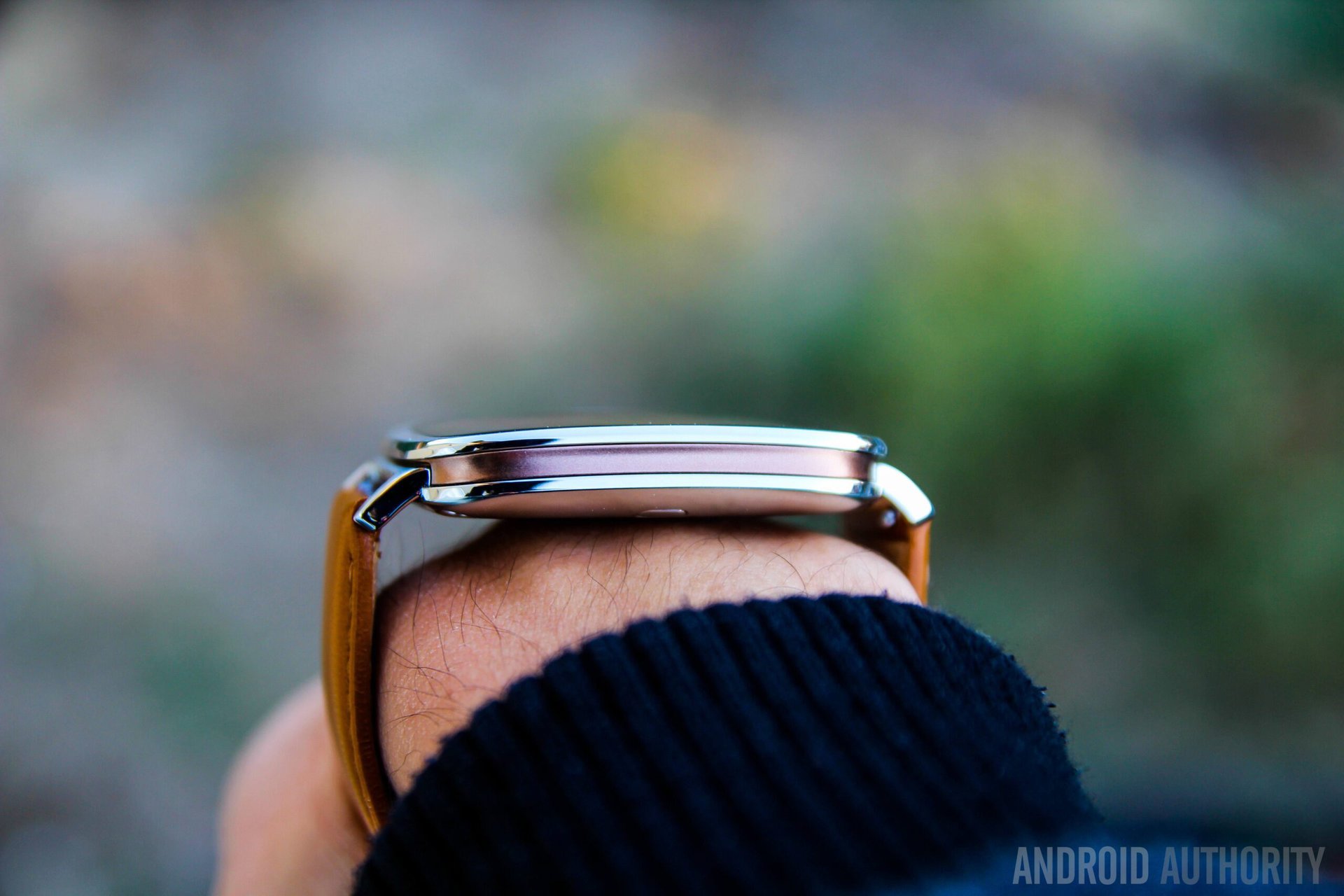
While I didn’t find the ASUS ZenWatch to be particularly impressive when it was first unveiled, I have certainly come to appreciate the design of this device after having the opportunity to use it for a while. Even though it has a square face, the use of premium build materials does make it stand out. With its stainless steel construction for the body and the clasp, along with a genuine leather strap, the ZenWatch is also not very big or heavy, which means that not only does it really nice, but is also very comfortable on the wrist.
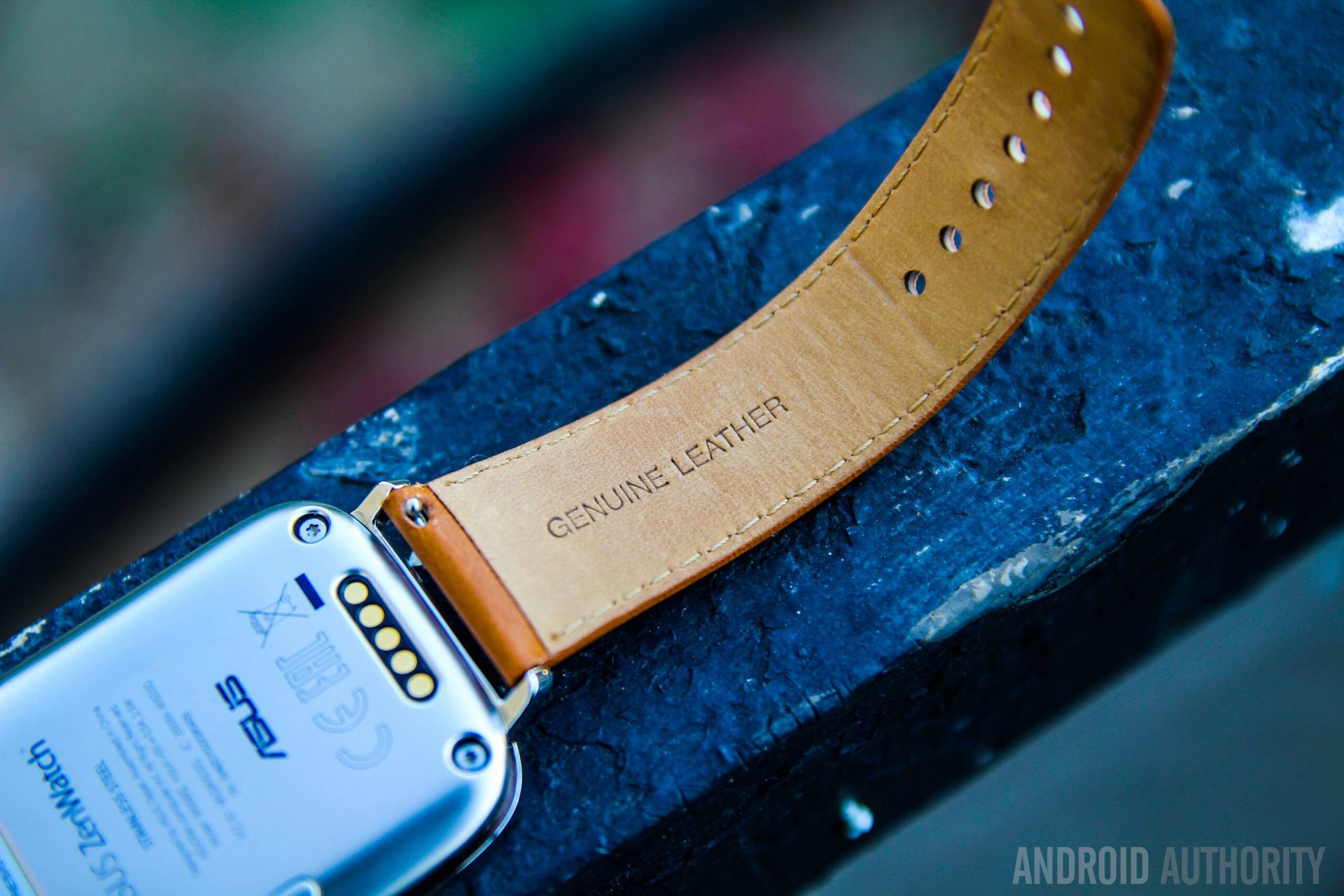
The bronze/orange color scheme of the strap could make it somewhat hard to match with your wardrobe though, which is one of my issues with the default design. That said, there is a lot more to like about this watch than not.
First is the fact that it is very easy to remove the straps from the ZenWatch, not requiring a special tool like some other smartwatches out there. All you have to do is pull a tiny lever on the strap and it comes right off, making it very simple to replace the straps. The second is the metal clasp that snaps together on your wrist with a press, which not only makes it easy and quick to put on the watch, but will also not cause any damage to the strap over a long period of time, which you may find happening with the tug and fasten variety you get with the LG G Watch R or the Moto 360.
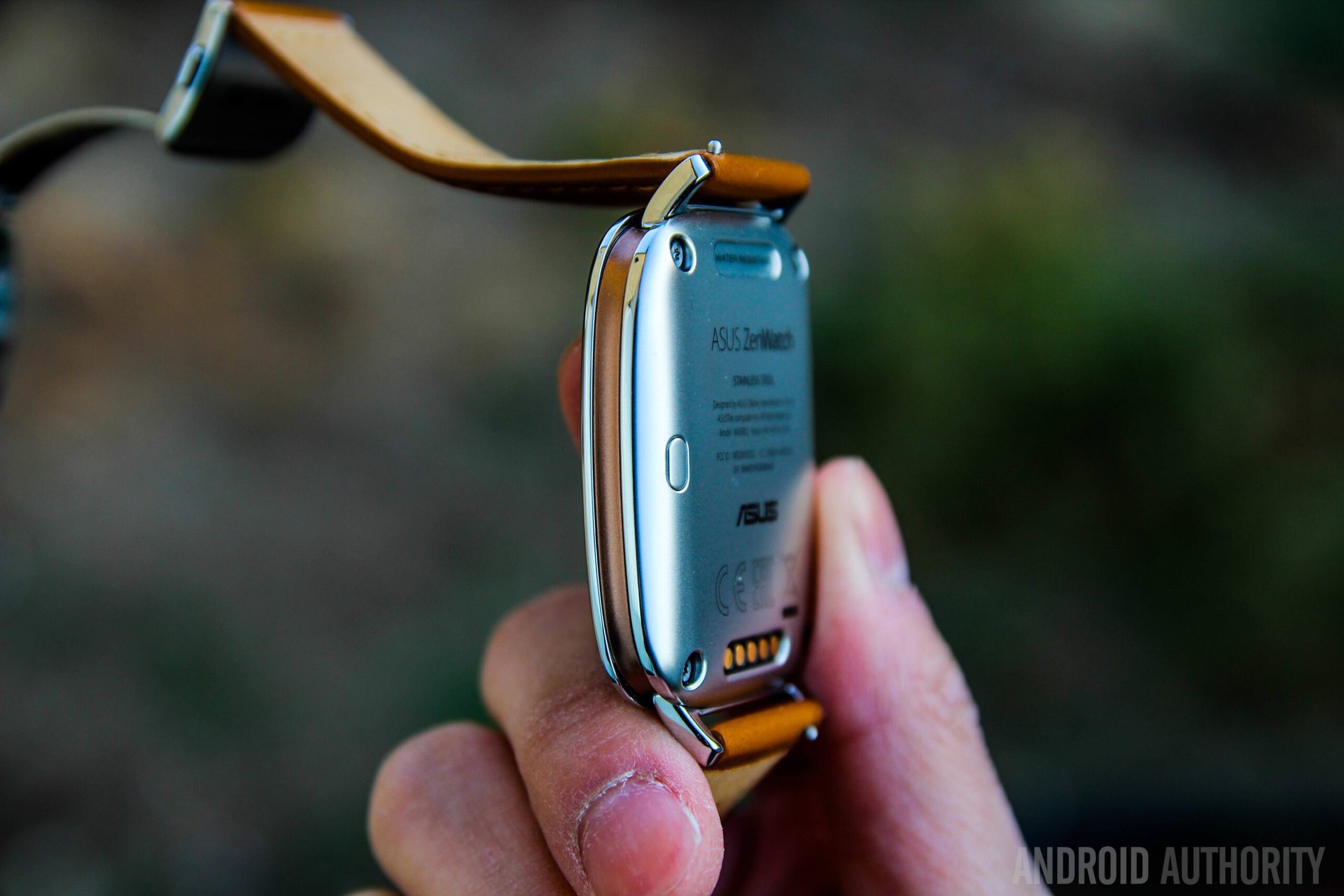
Another gripe in terms of the design of the ZenWatch is with regards to the placement of the power button on the back, making it very hard to get to while wearing the watch. Luckily, there aren’t a lot of instances where you need to get to this button, other than to power on the device when it is off. In other hardware, you get a pedometer and a heart rate monitor built in, and the device is protected from the elements courtesy of its IP55 certification of resistance against dust and water. Overall, the ASUS ZenWatch certainly ranks among the top Android Wear smartwatches available today in terms of design and build quality.
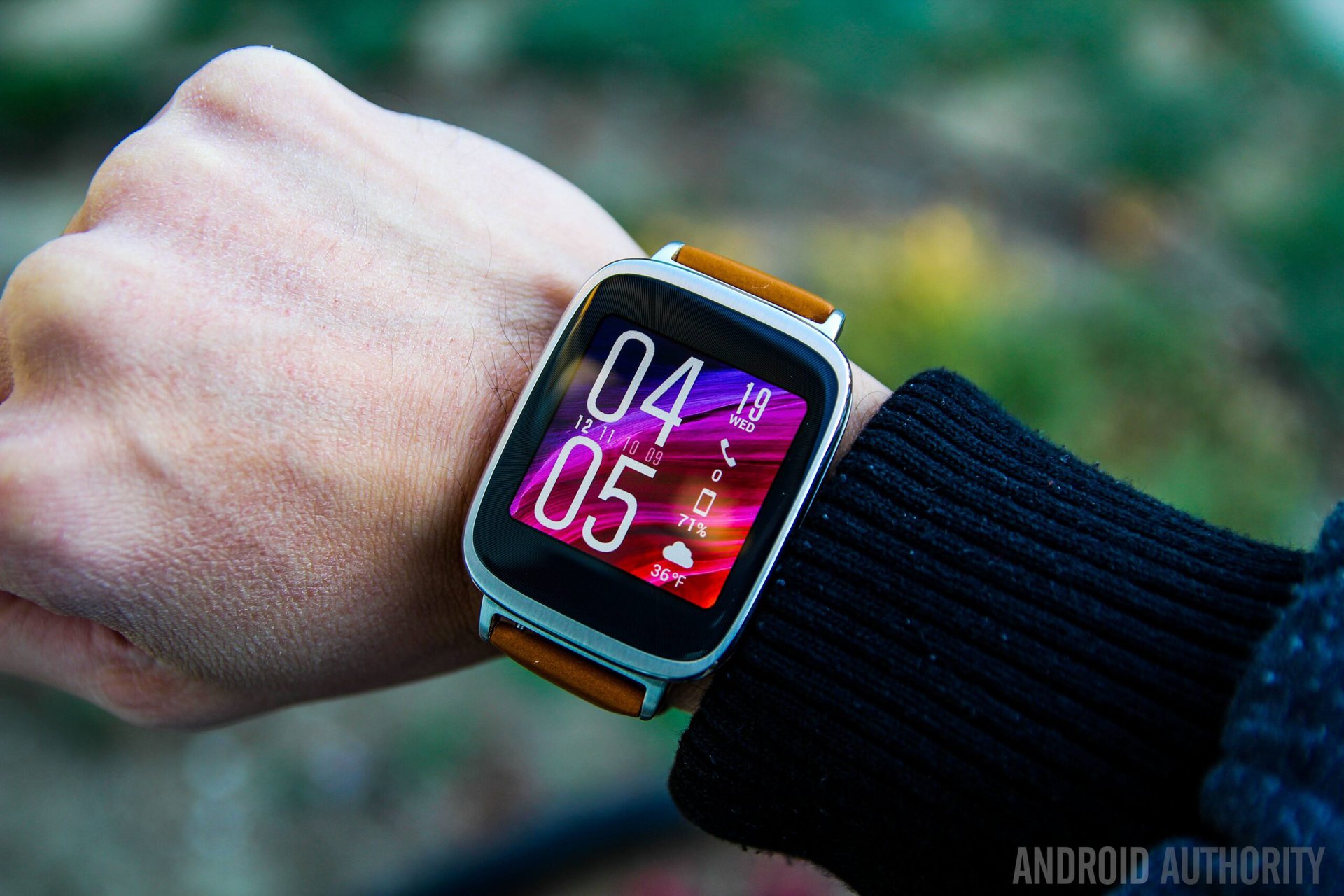
The ASUS ZenWatch features a 1.63-inch AMOLED display with a resolution of 320 x 320. Colors are nice and vibrant, viewing angles are good, and it does get very bright, making it easy to see while outdoors. The screen has a slight curve to it, and your finger just glides across it while swiping or scrolling, making it feel a lot nicer and more natural to interact with. The bezels around the display, however, are extremely thick because of the biometric sensor that is built in, but the deep blacks that AMOLED displays allow for means that dark watch faces do blend in a lot better with the bezels.
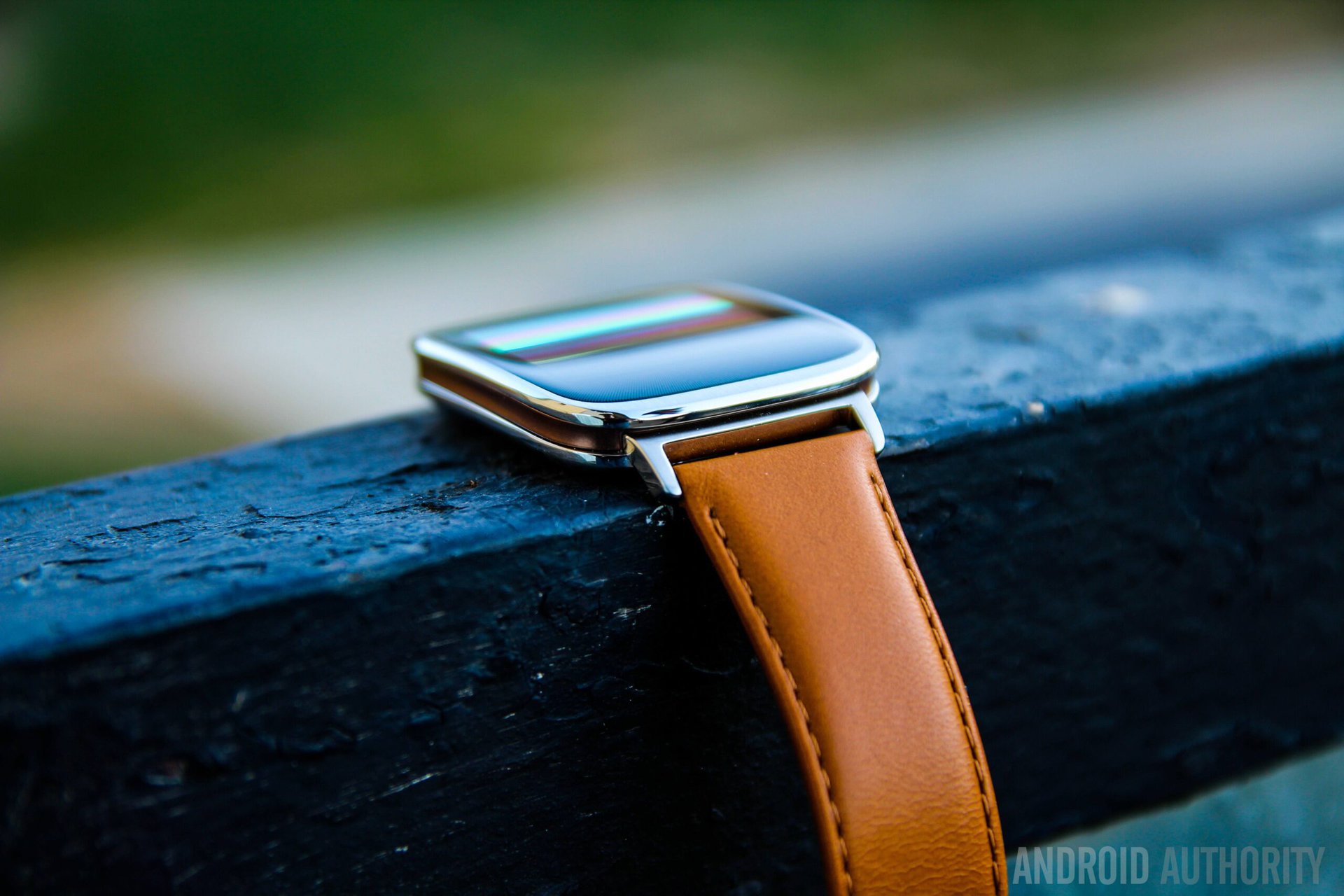
Under the hood, the ZenWatch packs a Qualcomm Snapdragon 400 processor, clocked at 1.2 GHz, along with 512 MB of RAM. This processing package is standard fare when it comes to the current crop of Android Wear smartwatches, and as such, the performance is along the same lines as what we’ve seen from these other devices. Everything is fast and responsive, with no instances of lag or dropped frames. There isn’t a lot you can do on Android Wear that is processor-intensive, and navigating around the OS, swiping through cards, and interacting with notifications have all been very smooth.
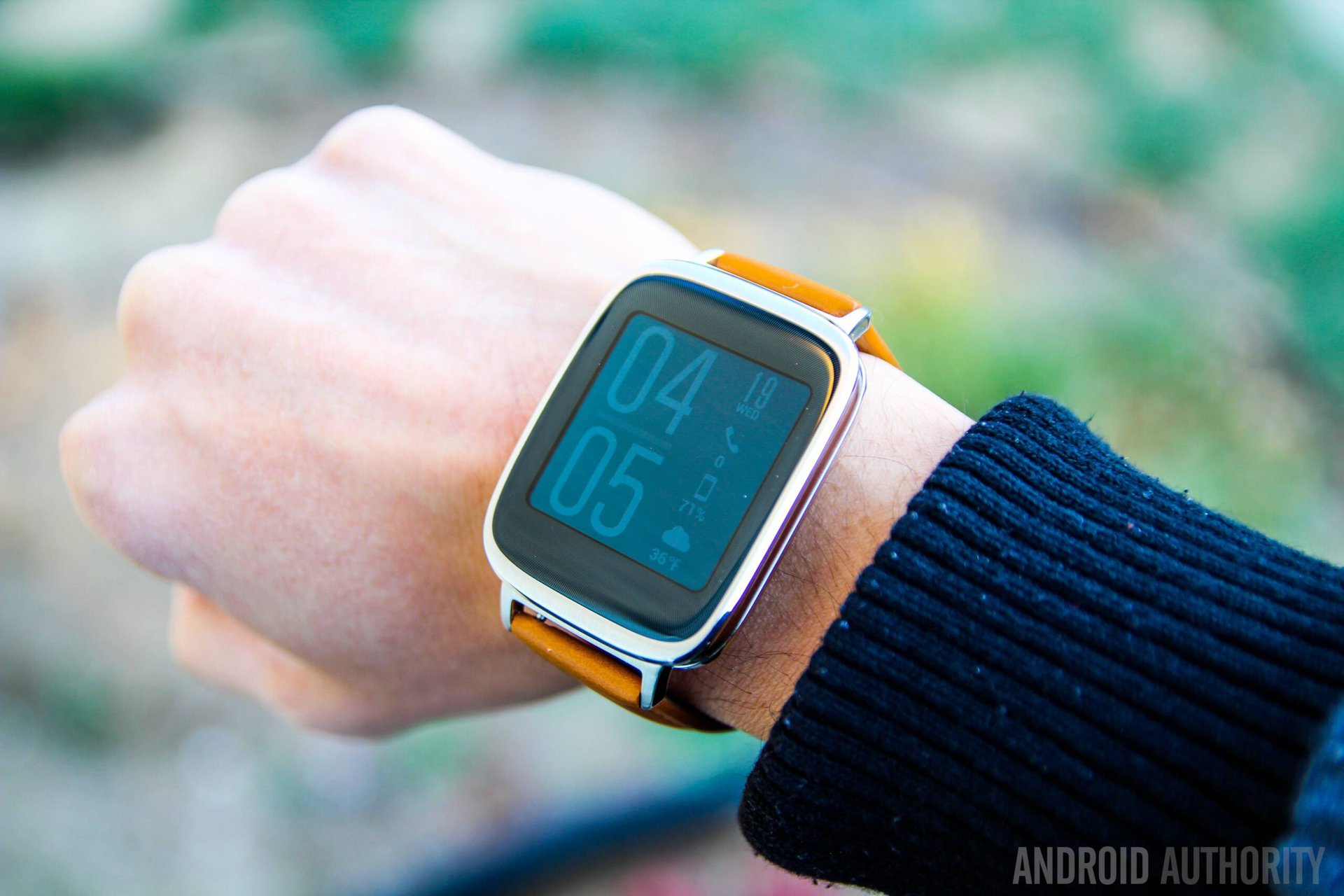
With Google not allowing OEMs to skin Android Wear, the overall software experience on the watch remains identical to the other AW smartwatches out there. Where they can differentiate themselves is when it comes to custom watch faces, and ASUS has some good options on offer. Some of these watchfaces include useful information like the date, remaining battery life, missed calls, weather information, and your daily steps.
There are also a few smartphone applications that ASUS has built for the ZenWatch. The ZenWatch Manager allows you to customize the watch faces by changing colors, and choosing what information you’d like to be displayed. You can also use the smartwatch to unlock your mobile device by bypassing the pin or pattern when the watch is close to your phone. You can also cover the watch with your hand to mute alarms or incoming calls, send out SOS messages to designated emergency contacts, find your watch using the phone or vice versa, have the watch vibrate if you stray too far away from your phone, and use it as a flashlight or compass.
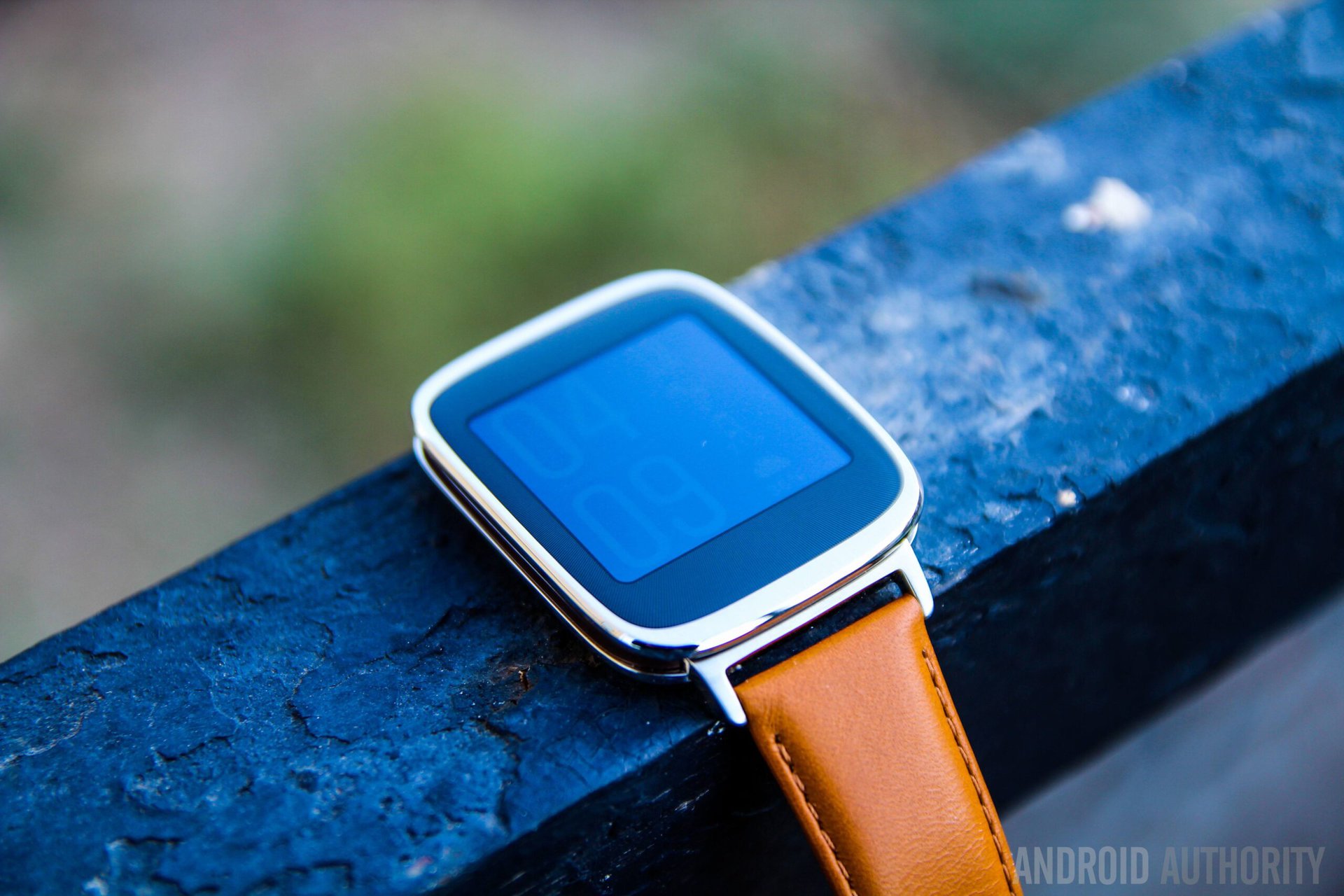
There is even a remote camera application that lets you control your smartphone camera using the watch, allowing you to take a photo by tapping on the display, or by simply twisting your wrist. ASUS has also created a wellness app to track your daily step goals, calories burned, measuring your relaxation, and monitoring your heart rate, using the built-in in bio sensor that is hidden in the bezels. It is a tad cumbersome to have to place to fingers around the display, but it does work, and seems to be fairly accurate when measuring the heart rate.
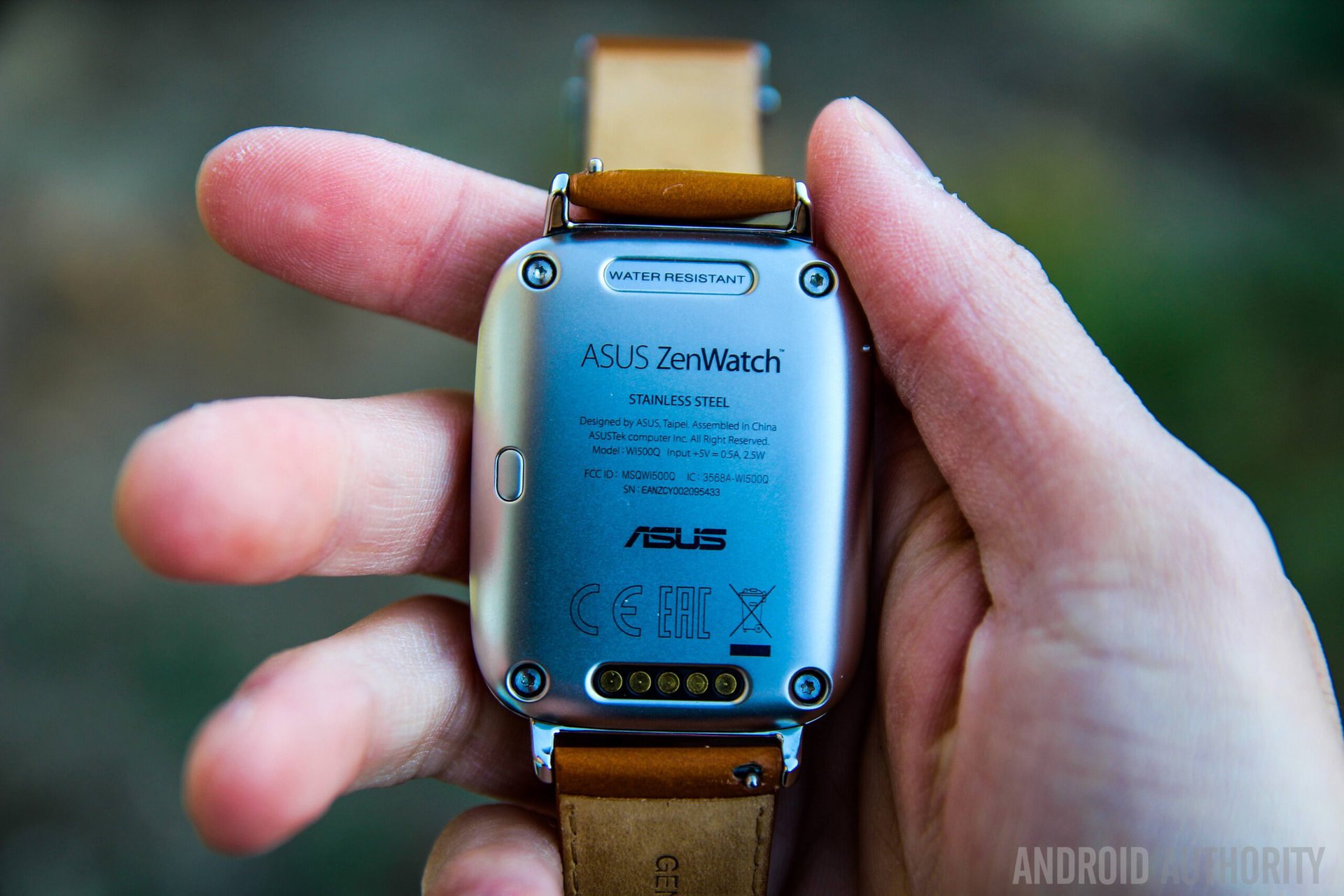
The ZenWatch comes with a 360 mAh battery, that ASUS claims will provide a full day of battery life. In my experience, it was even better, and I was consistently getting at least two days of use even with the screen always on mode enabled. Since this is an AMOLED display, the entire screen isn’t lit up when in its dimmed state, and you can probably push the battery life further by using a watchface with a black background.
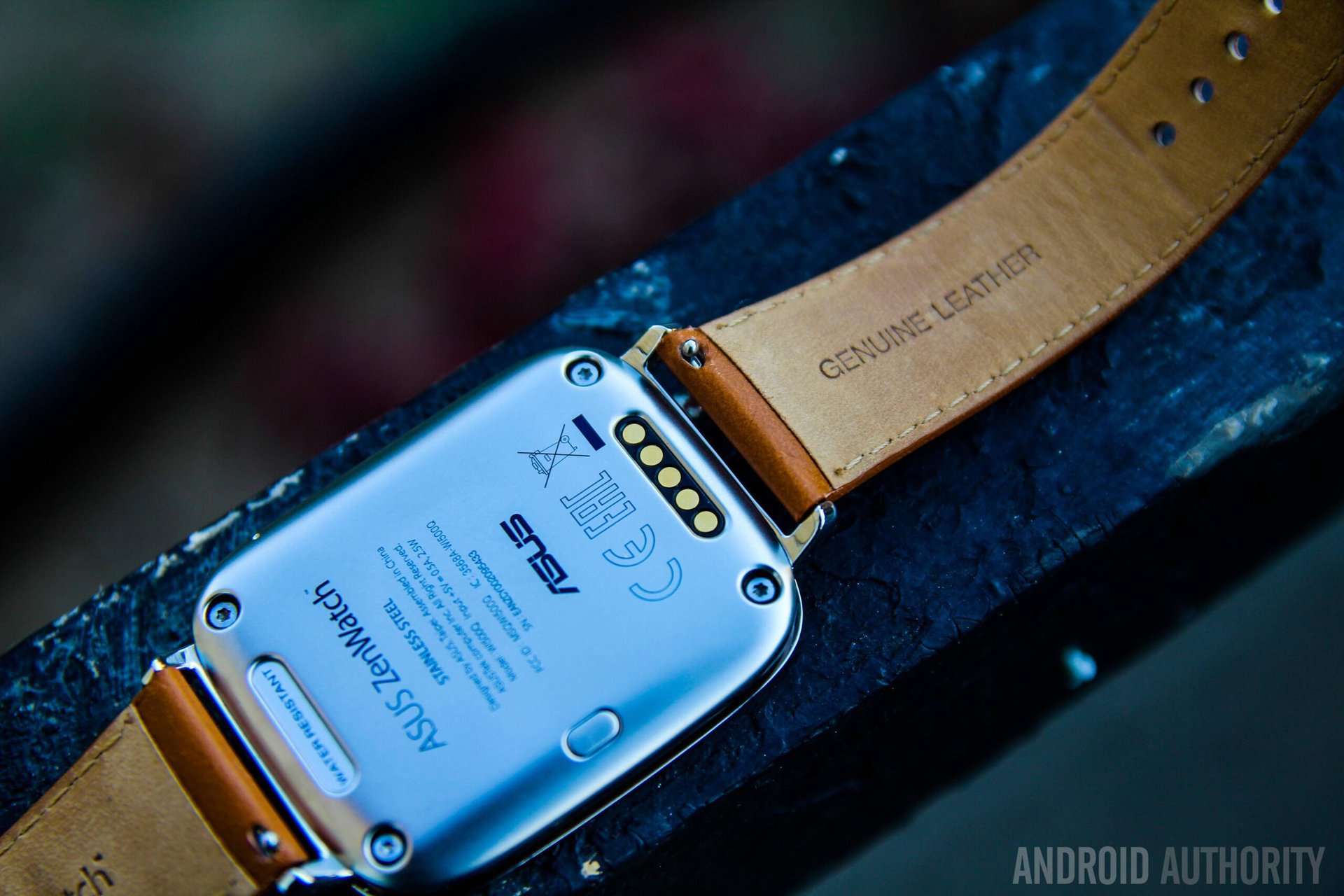
The charging implementation is a little bit clunky though, with the ZenWatch needing a large cradle that the device must be plugged into. There are prettier and more elegant implementations out there, and while the ZenWatch won’t look good sitting on your table while it is charging, it does get the job done.
